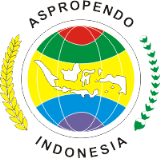INDONESIAN WEAVING CULTURE INNOVATION: A STUDY OF COLLABORATION AND INDIVIDUAL ACTORS
Abstract
The contribution of Indonesia's economic creative subsector to total Gross Domestic Product (GDP) increased for about 7.38 percent in 2015. To support it, Indonesian Agency for Creative Economy continuous to improve its performance conducting a capacity building plan; two of them is through product innovation and skill development. The purpose of this study is to see the approaches, analyze the stakeholders, and observe the practice of innovation induced collaboration in two contexts. The first is collaboration between an emerging contemporary Indonesian fashion brand by the name Noesa and a group of rural textile artisans of Watubo. The second is individual wavers of Lepo Lorun. The method used in this research is explorative analysis using short ethnography and deep interview. The analysis begins with a description of the products and services offered. Analysis then conducted with 3Cs Model and 'The Condition' model from Drucker (1993). The analysis of this research concluded that there are different ways of innovating through collaboration with different individual stakeholders. Each party has its own role in the community and targets its own objective in accordance with the provisions established. However, what interesting is that these two types of capacity building have the same goal, namely to re-learn weaving through different approaches. The results of this study are also expected to be a consideration to find out an effective and efficient way to promote Indonesian waving culture.
Keywords: Creative economy, innovation, ikat weaving, collaboration, local brand, rural artisan
Full Text:
PDFReferences
Anderson, K. 2009. Ethnographic Research: A Key to Strategy. Retrieved February 13, 2018, from https://hbr.org/2009/03/ethnographic-research-a-key-to-strategy.
Bekraf. 2017. Data Statistik dan Hasil Survei Ekonomi Kreatif.
Buckley, C. D. 2012. Investigating Cultural Evolution Using Phylogenetic Analysis: The Origins and Descent of the Southeast Asian Tradition of Warp Ikat Weaving. PLOS ONE, 7(12).https://doi.org/10.1371/journal.pone.0052064.
Drucker, P. F. 1993. Innovation and Entrepreneurship (First Pere). New York: HarperCollins Publisher.
Florida, R., Mellander, C., & King, K. 2015. The Global Creativity Index 2015, 68. Retrieved from http://martinprosperity.org/media/Global-Creativity-Index-2015.pdf.
Fuks, H., Raposo, A., Gerosa, M. A., Pimental, Pimental, Mariano, & Mariano. 2007. The 3C Collaboration Model. Encyclopedia of E-Collaboration, 637–644. https://doi.org/10.4018/978-1-59904-000-4.ch097.
Kotler, P., & Keller, K. L. 2009. Marketing Management. Organization, 22. https://doi.org/10.1080/08911760903022556.
Howkins, J. 2001. The Creative Economy: How People Make Money from Ideas. London: Penguin Books.
Merina, N. 2018. UMR Jakarta 2018 Terbaru, Berapa Kenaikan Gaji UMR dari Tahun ke Tahun? Retrieved April 11, 2018, from http://goukm.id/umr-dki-jakarta-2018/.
Stoner, J. L. 2013. Let’s Stop Confusing Cooperation and Teamwork with Collaboration. Retrieved February 17, 2018, from https://seapointcenter.com/cooperation-teamwork-and-collaboration/.
Refbacks
- There are currently no refbacks.













